
An infographic with five steps for vetting news sources.
- Subject:
- 21st Century Skills
- Critical Thinking
- Information, Media and Technological Literacy
- Material Type:
- Diagram/Illustration
- Provider:
- News Literacy Project
- Date Added:
- 01/30/2024

An infographic with five steps for vetting news sources.
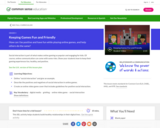
How can I be positive and have fun while playing online games, and help others do the same? Social interaction is part of what makes online gaming so popular and engaging for kids. Of course, online communication can come with some risks. Show your students how to keep their gaming experiences fun, healthy, and positive. Approximately 45 mins.
LESSON OBJECTIVES: Define "social interaction" and give an example. Describe the positives and negatives of social interaction in online games. Create an online video game cover that includes guidelines for positive social interaction.
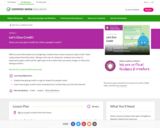
How can you give credit for other people's work? With so much information at our fingertips, students learn what it means to "give credit" when using content they find online. Taking on the role of a detective, students learn why it's important to give credit and the right ways to do it when they use words, images, or ideas that belong to others. Approximately 30 mins.
LESSON OBJECTIVES: Explain how giving credit is a sign of respect for people's work Learn how to give credit in their schoolwork for content they use from the internet

Differentiate between different levels of scientific evidence using this infographic. Discover eight distinct levels of scientific evidence arranged in a pyramid that reflects a spectrum of quality. This resource was developed in partnership with Dr. Katrine Wallace, an epidemiologist, educator and science literacy influencer.

Lions and Tigers and Bears OH-my! Help young students practice their research and presentation skills with this fun, hands-on animal research and presentation project.

A classroom-ready guide to accompany Season 3 Episode 1 of NLP's Is that a fact? podcast: “Chatbots are supercharging search: Are we ready?” Our guest is Will Knight, senior writer about artificial intelligence at Wired magazine. We discuss how ChatGPT is being applied to search and what some of the potential and pitfalls are of this new class of technology known as “generative AI.”

A classroom-ready guide to accompany Season 3 Episode 3 of NLP's Is that a fact? podcast: “Flagrant foul: Misinformation and sports.” Guest host Jake Lloyd digs into how misinformation manifests in the sports world with author and journalist Jemele Hill, a contributing writer for The Atlantic and host of the Spotify podcast Jemele Hill is Unbothered. Hill discusses not only how sports falsehoods spread, but also how the nature of sports reporting makes it more resistant to manipulation than news coverage.

A classroom-ready guide to accompany Season 3 Episode 5 of NLP's Is that a fact? podcast: “Opinion creep: How facts lost ground in the battle for our attention.” We discuss how the blurring of fact-based news and opinion has left the public more confused than informed. Our guest is Tom Rosenstiel, professor at the University of Maryland Philip Merrill College of Journalism and co-author of The Elements of Journalism.

Materials used from class subjects available online

Resources gathered from INFOhio for the 2023-2024 school year to train and share within our school, MVCTC-Miami Valley Career Technology Center for juniors, seniors, and teachers.
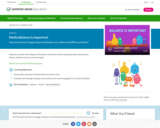
How do we find a happy balance between our online and offline activities? Students consider the feelings of themselves and others when making decisions about when, where, and how much to use technology. Approximately 25 mins.
LESSON OBJECTIVES: Know when and why to take breaks from device time. Consider the feelings of people around them, even when engaged in fun online activities.

This choice board, created from Google Slides, includes 15 different eBooks about media literacy. Be smart about what you see on social media. Learn more about how to find the facts on social media from these eBooks. Share this choice board directly with students and allow them to choose the eBooks they would like to read to learn more about the topic.

Microsoft report on cybersecurity 2019.
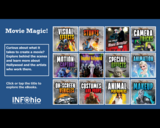
This choice board, created from Google Slides, includes 12 different eBooks and videos about the making of movies. Are you curious about what it takes to create a movie? Explore behind the scenes and learn more about Hollywood and the artists who work there. Share this choice board directly with students and allow them to choose the eBooks they would like to read to learn more about the topic.

What is the role of digital media in our lives? We often use our phones or other devices without even thinking about it. But paying closer attention to how -- and how much -- we use digital media can help us find better balance in our lives. Challenge students to truly consider how digital media adds to -- or takes away from -- their overall quality of life. Approximately 45 mins.
LESSON OBJECTIVES: Explore the role that digital media plays in their lives. Use the Digital Habits Checkup to reflect on the positive and negative impacts of digital media. Create a personal challenge to improve their digital well-being.
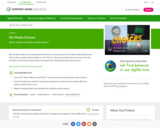
What makes a healthy media choice? We all make choices every day about the media we consume and create. But do kids understand what makes a media choice healthy or not? Hint: It's about more than just screen time. Use the activities in this lesson to give kids a framework for making informed media choices. Approximately 45 mins.
LESSON OBJECTIVES: Learn the "What? When? How Much?" framework for describing their media choices. Use this framework and their emotional responses to evaluate how healthy different types of media choices are. Begin to develop their own definition of a healthy media balance.

What is your strategy for finding media balance? Most of us use a lot of digital media in our daily lives -- even when we don't realize it! Having a balance between online and offline time is important, but healthy media balance might look different for everyone. Help students create a personalized plan for healthy media use. Approximately 55 mins.
LESSON OBJECTIVES: Make an inventory of their media choices and how those choices make them feel. Brainstorm personal strategies for balancing media use. Create personal guidelines for promoting healthy media balance.

How does social media affect our relationships? For most middle schoolers, being on social media can mean connecting with friends, sharing pictures, and keeping up-to-date. But it can also mean big-time distractions, social pressures, and more. Help students navigate the different feelings they may already be experiencing on social media. Approximately 45 mins.
LESSON OBJECTIVES: Identify the role of social media in their lives. Reflect on the positive and negative effects social media use has on their relationships. Recognize "red flag feelings" when using social media and use the Feelings & Options thinking routine to consider ways to handle them.

Two-minute quiz to help students recognize examples of conspiratorial thinking.

Two-minute quiz focused on distinguishing the real meaning within data.